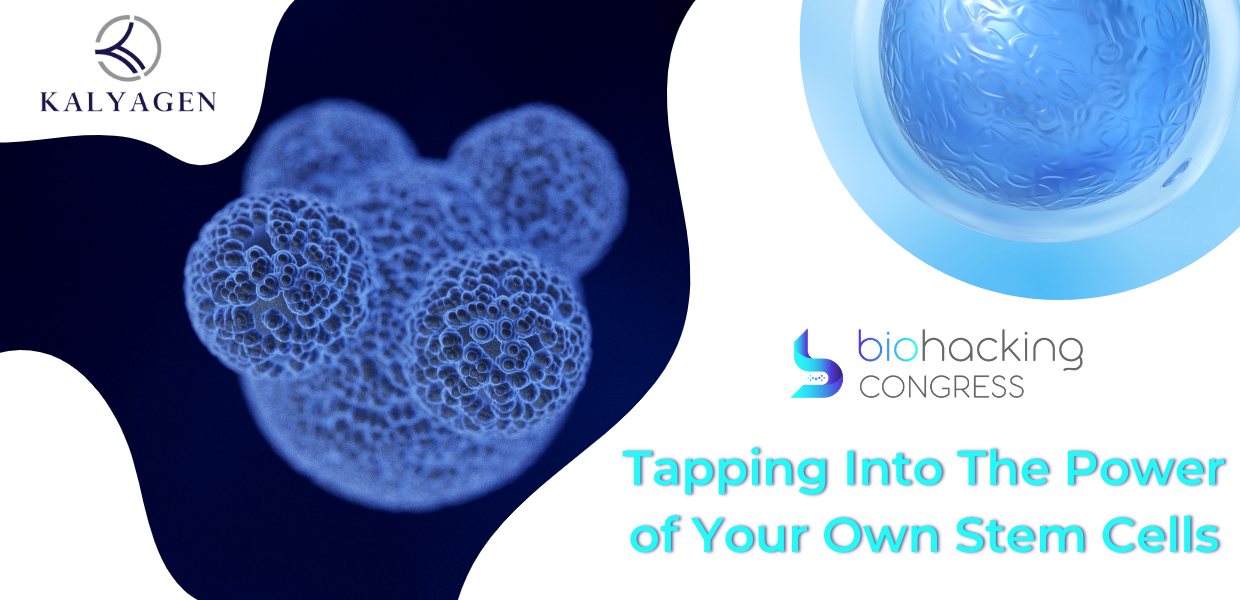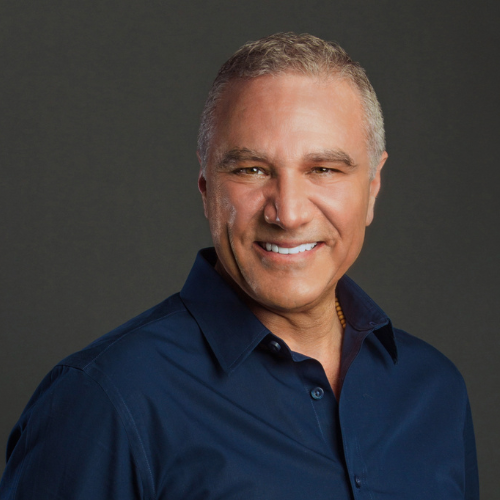Tapping Into The Power of Your Own Stem Cells
Unlocking the Power of Stem Cells: Understanding Their Role in the Body
Have you ever wondered how your body heals from injuries? It's a fascinating process that we rarely talk about. Stem cells play a vital role in this process, repairing whatever is broken in your body every day of your life. Christian Drapeau, MSc. Neurophysiology and CEO of Kalyagen, sheds light on the importance of stem cells and how they work in his lecture on stem cell sales.
For many years, scientists did not fully understand what happened in the body when we healed. However, research over the past 20 years has finally uncovered the crucial role that stem cells play in the healing process. Stem cells are released from the bone marrow when an injury occurs and travel to the affected area. They then multiply and transform into the specific cells needed to repair the damaged tissue.
Stem cells are a natural repair system, and their importance cannot be overstated. Without stem cells, our bodies would not be able to heal from injuries. This system has been working within us since the day we were born and continues to do so every day.
Stem cells are the key to unlocking the body's natural healing power, and it's essential to understand their role in our lives. Whether it's healing from a cut or repairing a damaged organ, stem cells are constantly at work within us. As we continue to research and understand more about stem cells, the potential for their applications in medicine and wellness is vast.
What is a Stem Cell: Types and Functions
Stem cells have the unique potential to self-replicate and convert into cells of different tissues during a person’s life. The majority of bodily cells are specialized and serve a specific purpose in the body. Brain cells, for example, release neurotransmitters (impulses) in response to electrochemical signals from other brain cells; retinal cells are activated by light, and pancreatic cells create insulin. Somatic cells are cells that do not multiply or differentiate into different types of cells. On the other hand, stem cells are undifferentiated cells that do not transform into specific cell types until they receive a signal to do so. Adult stem cells and embryonic stem cells are the two types of stem cells. Adult stem cells are cells present in the body after birth, whereas embryonic stem cells are retrieved from the very early embryo (blastula).
The term “adult stem cells” does not allude to a feature associated with adulthood; rather, it is used to distinguish these stem cells from stem cells in a developing embryo. Adult stem cells include stem cells found in the bone marrow of adults and children and stem cells present in the umbilical cord. The approach of Endogenous Stem Cell Mobilization (ESCM) pertains to the release of stem cells found in the bone marrow after birth.

The human body is a complex and sophisticated organism made up of various systems that work together to ensure our survival. Throughout history, scientists have discovered several of these systems, such as the immune, endocrine, cardiovascular, and digestive systems. However, recent advancements in scientific research have uncovered a whole new system in the body: the role of stem cells.
Adult stem cells, well-known for their role in the constant renewal of blood cells and the regeneration of bone, ligament, tendon, and connective tissues, were previously believed to have limited potential to become other types of cells. But with the development of the green fluorescent protein (GFP), scientists were able to track stem cells as they left the bone marrow and moved into other tissues. This led to the discovery that stem cells circulate and migrate into damaged tissues, healing them and restoring normal function. Essentially, stem cells help the body repair and renew by supplying new cells and replacing damaged or lost somatic cells throughout the body.
The discovery of stem cells' role in the body is significant in the field of biology and medicine. To put it into perspective, a system is an organ or group of organs and tissues that accomplish a specific task or secrete specific compounds, all with the aim of supporting the health and survival of the organism. The immune and endocrine systems, discovered in the late nineteenth century, were the last time scientists celebrated the discovery of a new system.
The cardiovascular system, for example, is made up of the heart and blood vessels, which pump and carry blood to deliver oxygen, nutrients, and other compounds to every cell of the body. The digestive system, on the other hand, is made up of the gastrointestinal tract, liver, pancreas, and gallbladder, which break down nutrients into small compounds for the cells to absorb and use for energy, growth, and cellular repair.
Stem cells play a crucial role in the repair and renewal of various organs and tissues of the body, making it a vital system. The bone marrow produces and releases stem cells, which circulate and migrate into damaged tissues, healing them and restoring normal function. After a heart attack, for example, the heart releases compounds that attract circulating stem cells to support the repair of the heart. The same goes for the skin and all other organs and tissues of the body.

Christian Drapeau emphasizes the significance of stem cells and their impact on our lives. Stem cells have the power to repair tissues that were once thought to be impossible to regenerate. In a study done by Dr. Taylor, stem cells were extracted from a mouse and circulated into the heart. Enzymes that digest muscle tissue were then introduced, causing the entire muscle tissue of the heart to disappear. However, when the molecular signature of the heart was preserved and stem cells were laid on it, a fully reconstituted heart was formed within a week or two.
The Benefits and Limitations of Using Stem Cells for Medical Treatment
In a remarkable study over a decade ago, Dr. Doris Taylor, then a researcher at the University of Detroit, achieved a breakthrough in the field of regenerative medicine. She extracted a mouse's heart, isolated the stem cells from it, and circulated enzymes that digested the heart muscle tissue. Within 12 hours, the muscle tissue was gone, leaving behind only the collagen connective tissue and envelope of the heart. However, the molecular signature of the heart remained intact.
Dr. Taylor then laid some of the stem cells that were extracted earlier on the molecular signature. Within a week or two, a complete heart was reconstituted, beating in the test tube. This study demonstrated the immense potential of stem cells in regenerating and repairing damaged tissues.
Stem cells have the ability to convert into cells of various tissues and play a crucial role in tissue repair. The availability of stem cells in circulation is the most important factor in tissue repair. Individuals with more stem cells in circulation repair better and more efficiently. Conversely, individuals with fewer stem cells in circulation may take longer to recover from injuries or diseases.
Dr. Taylor's study highlights the immense potential of stem cells in regenerative medicine. It also raises the question of whether increasing the number of stem cells in circulation can help individuals recover from injuries and diseases more efficiently. Further studies in this field may lead to groundbreaking treatments for various medical conditions.
The Key to Biohack Health: The Role of Stem Cells in Age-Related Diseases
Stem cells have become a buzzword in the medical community, and for good reason. Christian Drapeau, CEO of Kalyagen and a neurophysiologist, gave a lecture in which he discussed the importance of stem cells in age-related diseases. His findings suggest that the natural decline of circulating stem cells is directly linked to the development of age-related diseases. By comparing the number of stem cells in people who are healthy to those with age-related diseases, Christian Drapeau found a straight-line correlation. Those who had fewer stem cells were more likely to have a disease.
All age-related diseases are caused by a decline in the number of circulating stem cells. In Christian Drapeau's research, he found that people with kidney failure, erectile dysfunction, and Alzheimer's disease all had fewer stem cells in the circulation than healthy people. This discovery led him to believe that the key to preventing age-related diseases was to increase the number of stem cells in circulation. By doing so, the body can repair itself more effectively, preventing or delaying the onset of age-related diseases.
Christian Drapeau's interest in stem cells started when he was studying blue-green algae that were growing in climate lakes. He discovered that people who were taking the algae were experiencing benefits in inflammation, immune system function, and mental clarity. However, he noticed that some people were also reversing severe conditions linked to the nervous system, cardiac function, liver function, pancreas, and joints. He wondered how one product could have so many different benefits touching various aspects of human health.
After reading an article about stem cells in the brain, Christian Drapeau realized that stem cells could become other types of cells. This led him to believe that stem cells were the body's repair system. He hypothesized that the blue-green algae were triggering the release of stem cells from the bone marrow. Using a flow cytometer, Christian Drapeau discovered that the algae were putting more stem cells into the circulation, which led to tissue repair.
Research provides evidence that increasing the number of stem cells in circulation could be the key to preventing age-related diseases. By doing so, the body can repair itself more effectively, preserving health for years to come. His research has led to the development of products, such as Kalyagen, which aim to increase the number of stem cells in circulation. This discovery could revolutionize the way we think about aging and could potentially change the course of many age-related diseases.

Recent studies have shown that the number of stem cells presents in circulation has a direct correlation with the body's ability to self-repair. When more stem cells are present, tissue repair occurs at a faster and more robust rate. Moreover, a higher number of stem cells in circulation has been linked to a lower risk of developing degenerative conditions that are typically associated with aging.
With this in mind, there has been growing interest in stem cell therapy as a means to biohacking health and healing. Stem cell therapy involves the administration of stem cells to an individual to aid in the repair and regeneration of damaged tissue or organs. The last decade of research into stem cells and stem cell therapy has provided compelling evidence for their potential in treating a wide range of health conditions, from diabetes to heart disease.
The remarkable potential of stem cells in promoting health and healing is an area of significant interest for researchers and clinicians alike. The link between stem cell levels and the body's ability to self-repair underscores the importance of maintaining healthy stem cell levels as we age. As research in this field continues to progress, the use of stem cells in therapeutic interventions may become increasingly common and transformative in the years to come.
The Power of Natural Ingredients in Supporting Stem Cell Health
Stem cells are the innate repair system of the body, and their importance in maintaining good health cannot be overstated. These specialized cells have the ability to differentiate into various types of cells that are necessary for the proper functioning of organs and tissues. However, as we age, the number of circulating stem cells declines, leading to a decrease in the body's natural ability to repair and regenerate. Fortunately, advances in stem cell research over the past years have revealed that natural ingredients promoting stem cell release and migration can help the body's natural repair system.
Research has shown that increasing the number of circulating stem cells is one of the best anti-aging strategies. The development of age-related health problems has been linked to a lower number of circulating stem cells, highlighting the critical role they play in maintaining good health. Stemregen is a supplement that supports the release of stem cells from the bone marrow, leading to benefits touching various aspects of human health.
Stemregen contains natural ingredients that work synergistically to support stem cell health. These ingredients include green tea extract, blueberry extract, and resveratrol. Green tea extract is known for its antioxidant properties and has been shown to promote the release of stem cells from the bone marrow. Blueberry extract is also rich in antioxidants and has been shown to support the migration of stem cells to damaged tissues. Resveratrol is a natural compound found in grapes and other berries that have been shown to have anti-inflammatory properties and to promote the self-renewal of stem cells.
By promoting stem cell release and migration, Stemregen can help the body's natural repair system to function at its best. Stemregen is a natural and safe way to support stem cell health and is suitable for anyone looking to maintain good health and vitality. Incorporating Stemregen into your daily routine can help you to age gracefully and enjoy all the benefits of a healthy and active lifestyle. With Stemregen, you can take a proactive approach to your health and biohack well-being, and enjoy all the benefits that come with a body that is functioning at its best.

BiohackingCongress Team is very grateful to Christian Drapeau, MSc. Neurophysiology, CEO of Kalyagen for joining the BiohackingCongress and giving a life-changing lecture.
Watch Christian Drapeau’s lecture and 100+ lectures, panel discussions, and performances from renowned biohackers on biohacking your body with a BiohackingCongress year-long subscription. Get access to a healthy future now!
Subscribe to watch more Videos with Top Biohackers. Stay tuned into the latest biohacking products for biohacking your health and biohacking for longevity.
Based on the lecture by Christian Drapeau
Join BiohackingCongress Miami on October 20-22!
Additionally, if you're interested in learning more about optimizing your body's potential and maintaining good health, we invite you to attend the BiohackingCongress in Miami on October 20-22! Limited early bird tickets are available, so don't wait to reserve your spot. Click the button below to purchase your tickets now:
Join us for an exceptional experience at the BiohackingCongress Miami, featuring a panel of leading biohacking and longevity experts who will showcase the latest research and insights on how to optimize your life.
Get ready to be inspired by our remarkable speakers and seize the chance to connect with like-minded individuals. Don't miss out on this incredible opportunity to take your personal growth to the next level!
Special Access to
Exclusive TopBiohacks
and more



